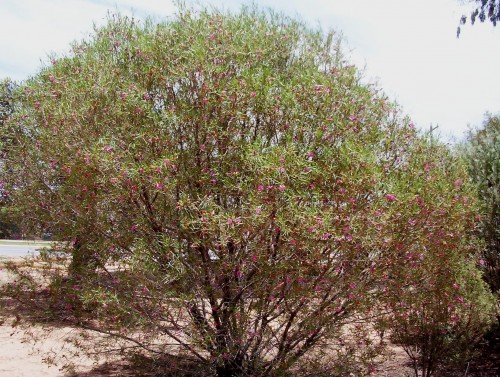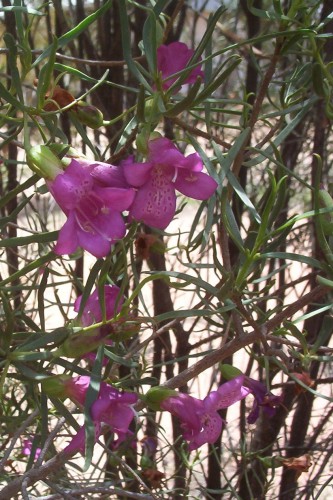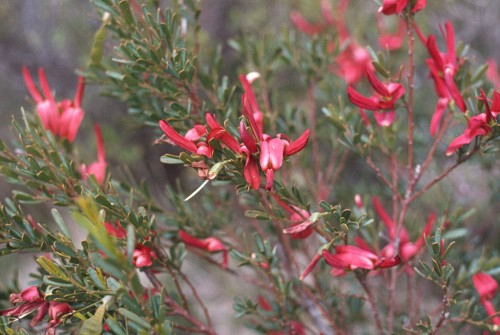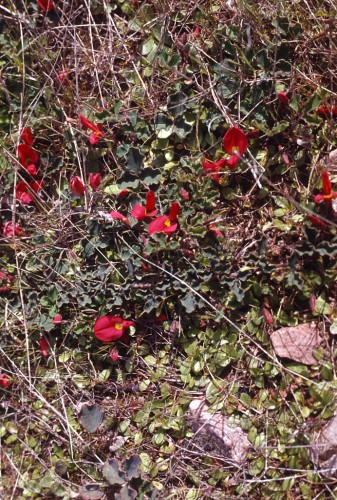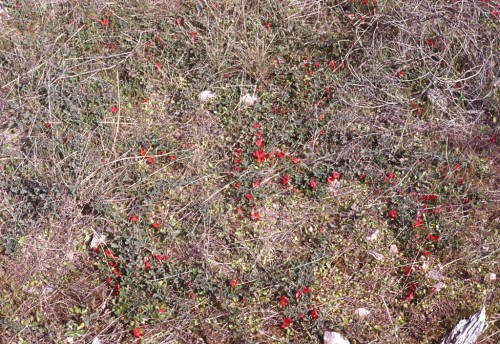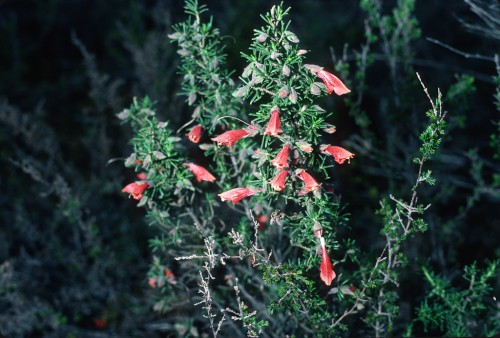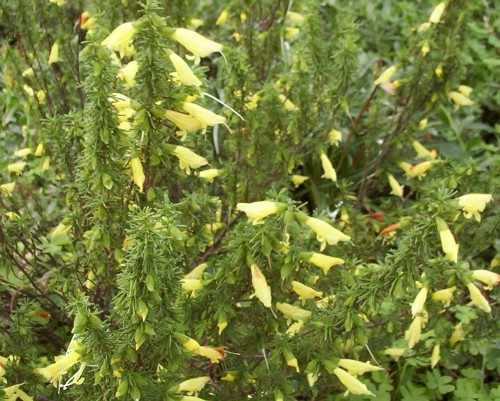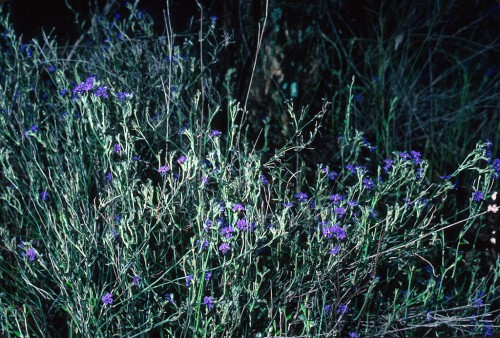Eremophila oppositifolia x
We had lunch at Murrayville in Western Victoria at a rest area and this Eremophila formed a screen on one side of the picnic table. I am not really sure whether it is a hybrid, but it has the look of Eremophila oppositifolia, but then again, not quite. So I am assuming it is a hybrid, as many Eremophilas do form natural hybrids in the wild and they are being propagated. This plant has pink flowers with spots in the throat. The pure Eremophila oppositifolia has white, cream, pink or purple flowers, all of which are very pretty plants.
In most cases the plants I have seen are around two metres tall. These possible hybrids were about two and a half metres tall and nearly the same width.
Further along the road is a planting that I admired and had a number of photos of from a couple of years ago. I was really disappointed to see so many of the plants dead. This area has been in drought for a while. Some Eremophilas need a reasonable rainfall, probably deep drinks, infrequently, rather than small amounts often.
Templetonia retusa (Cocky’s Tongue)
There are large, red pea shaped flowers very attractive to birds and butterflies, during winter and spring. This is a hardy plant suitable for front line coast and inland situations. It is moderately frost tolerant and requires good drainage. This can be achieved by creating a planting mound at least 5-10cm higher than the surrounding soil, if drainage is a problem. Templetonia retusa is found in South Australia and Western Australia. More information can be found here and here.
Kennedia prostrata (Running Postman)
This species grows in acid to alkaline conditions, is moderately frost tolerant, and can be trimmed if necessary. It flowers from winter through to early summer, depending on the area. More information can be found here and here.
Prostanthera aspalathoides (Mint Bush)
This photo was taken in Little Desert National Park. It grows in the mallee sands and there- fore needs good drainage. The occasional trim after flowering is useful for keeping the bush compact. Nectar feeding birds, like Honeyeaters, love the nectar filled flowers.
This is a species that grows in acid to highly alkaline soil, and is drought and frost hardy. It is suitable for second line coastal planting, and grows to .7m high.
Dampiera rosmarinifolia
Dampiera are suckering plants which form clumps, increasing from an underground root stock from which new growth arises. When this happens is a good time to prune out old growth and tidy the clump. This photo was taken in Little Desert National Park in Western Victoria and I suspect it is a subspecies of Dampiera rosmarinifolia. I will check that when I get access to my reference books again.
This is a hardy plant and has grown very well in our 350 mm of rain which we usually get in the winter. It flowers in the spring with these dark purple flowers. We have a pink and a mauve version of this also. It needs well drained soil which can be achieved by mounding the soil. Even as little as 10 cm will improve drainage.
